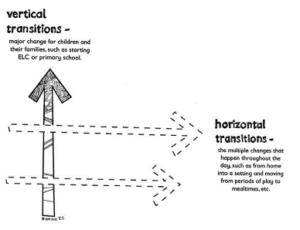Attachment
What is it?
Attachment is the emotional bond with another person. Children need to experience connection, acceptance of who and how they are, and develop loving bonds with their caregivers. In an educational setting, professional love in attuned reciprocal exchanges helps children to learn to accept themselves, develop positive self-esteem and confidence in order to thrive.
John Bowlby was a psychologist who believed that early childhood attachments played an important role throughout life. He believed that children are born biologically programmed to seek and establish a close relationship with their caregiver; the connection between mother and baby has developed to ensure the baby’s survival and for their needs to be met. Bowlby was particularly interested in how separating from their caregiver caused anxiety. He worked with Mary Ainsworth to develop attachment theory.
“The environment of relationships within an early years setting is just as important as the physical environment (Mortensen and Barnett, 2015). One way to describe this is in terms of attachment. This can be understood as the balance of security, space, and sense of being loved and cherished that children need from us in order to feel safe and cared for and to be able to explore and create for themselves. Although significant throughout a child’s lifespan, the early attachment process can have a life-long impact on how children deal with change and uncertainty. According to O’Connor, the securely attached child is building up an image of themselves as someone who is ‘lovable and well-loved’ (2018, p. 5).”
(Realising the Ambition, Education Scotland, 2020, p. 32)
“Attachment is the biological need for relationships that all human beings are born with. It is especially important in the early years of life because it shapes the ways our brains and bodies handle emotions.”
(Suzanne Zeedyk, 2021)
“Positive relationships are at the heart of the school/ELC setting and are seen as underpinning all successful learning and teaching.”
(Applying Nurture as a Whole School Approach, Education Scotland, 2018, p. 14)
Key messages:
- Practitioners have a sound understanding of nurture and attachment.
- Practitioners have a sound understanding of early childhood development and the needs of children throughout their developmental stages.
- An unrushed settling in routine is established and agreed with families to consider the individual’s needs.
- Practitioners begin building relationships before starting at the setting and for transition into Primary 1.
- Children are given time to build relationships and trust with practitioners.
- Drop off and pick up routines are established and take into account the needs of the individual families.
- There is an open-door policy encouraging all families to feel welcome and included.
- The setting provides a warm, nurturing, welcoming environment within a calm and engaging atmosphere.
- Children experience consistency in staffing, routine, interactions, language and communication, environments.
- Practitioners sensitively support the development of language.
- Practitioners actively model and support the development of language for all children.
- Practitioners use body language and facial expressions when communicating with children.
- Children are valued as communicators.
- Keyworker/small groups times are unrushed, planned for and used effectively to allow all children to have an opportunity to express their thoughts and feelings.
- Cosy nooks and quiet areas are present throughout the environment.
- Settings actively support families in understanding and encouraging schematic behaviours and other developmental play stages their child displays.
Ways we can do this:
Transition policy and daily routines are agreed upon and shared with families to ensure a smooth and nurturing approach.
Setting practitioners and keyworkers initiate contact with children and families during the transition process.

The transition from home to ELC and ELC to Primary 1 ensure that children do not feel they have been dropped off with strangers by building relationships over time.
Children are welcomed by name.
Ensure the ‘Settling in Time’ is responsive, calm and unrushed.
Practitioners remain calm, reflective, and mindful in seeing things from the child’s point of view.
Practitioners are ‘mind-minded‘ about managing emotions and promoting positive, loving, nurturing relationships in ELC.
Children are given time and space to get to know the practitioners and other children.
Drop off and pick up times are handled sensitively.
Practitioners offer and give children cuddles when needed, ‘professional love’.
The child’s voice is present in different ways within the setting, e.g. verbally, mark-making, adult scribing, photos.
All practitioners engage with and implement SBC Nurturing Approaches guidelines and self-evaluation.
Wellbeing indicators are embedded within the everyday life of the setting.
Through building caring relationships and trust, the practitioners create a “Circle of Security” that allows children to try new things and take risks, knowing they are safe and secure (Play is the Way, Palmer, 2021, p. 29).

